Science & Technology: June 2025 Current Affairs | General Test Preparation for CUET UG - CUET Commerce PDF Download
| Table of contents |

|
| Core-Mantle Connectivity |

|
| Stratospheric Aerosol Injection |

|
| Internet of Things (IoT) |

|
| Neurodegenerative Diseases |

|
| Voyager Tardigrades Experiment |

|
Core-Mantle Connectivity
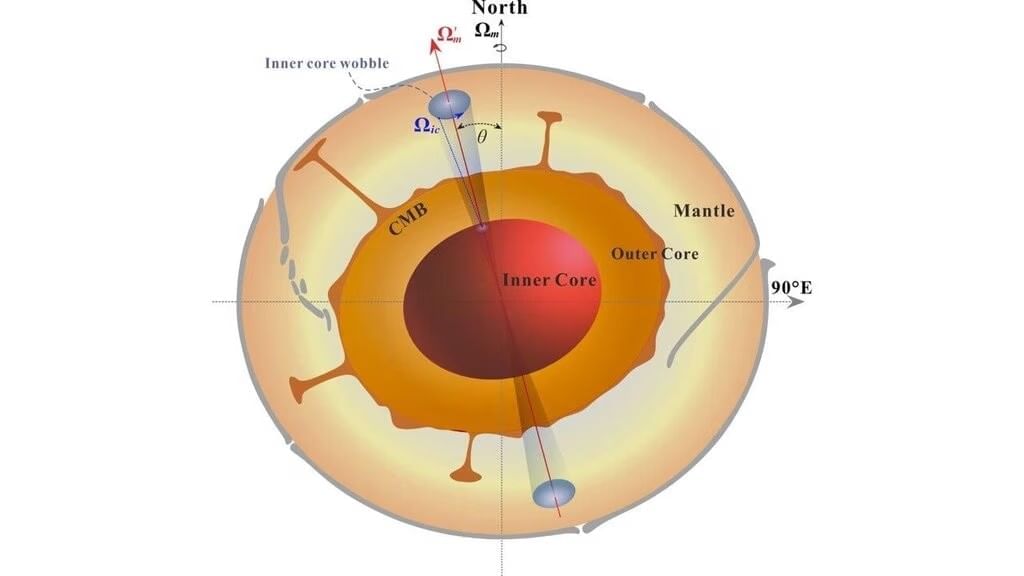
Why in News?
A recent study conducted by German researchers has uncovered that precious metals such as gold, platinum, and ruthenium are migrating from the Earth's core to the surface through volcanic activity. This challenges the long-held belief that the core remains geochemically isolated from the mantle and crust.
Key Takeaways
- Core-mantle material exchange is active, with core materials moving upward through mantle plumes.
- The Earth's core holds over 99.999% of the planet's gold and other siderophile elements, which were thought to be inaccessible.
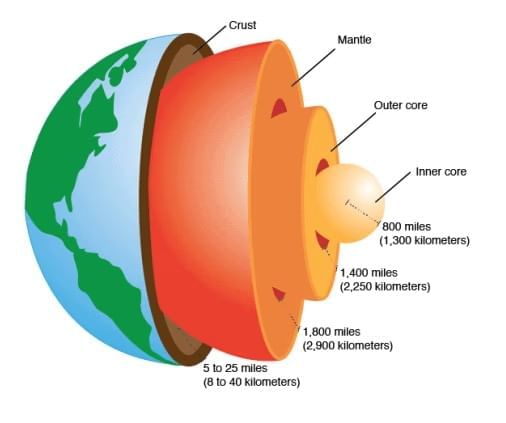
Additional Details
- Core-Mantle Material Exchange: Researchers observed volcanic rocks in Hawaii that are formed by mantle plumes rising from the core-mantle boundary. They discovered significant levels of ruthenium-100 (100Ru), an isotope predominantly found in the Earth's core, indicating a greater connectivity between the core and mantle than previously believed.
- Precious Metals in the Core: The Earth's core is rich in siderophile elements like gold, platinum, and iridium, which were once thought to be trapped beneath a thick rock barrier separating the core from the mantle and crust.
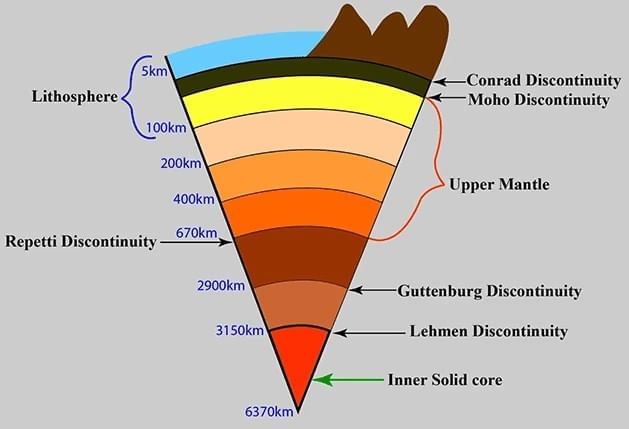
What are the Key Facts About Earth’s Mantle & Core?
- Mantle: The mantle makes up about 83% of Earth's volume and 67% of its mass, extending from the Moho discontinuity (approximately 7-35 km deep) down to the core-mantle boundary at 2,900 km depth. It is primarily composed of silicate rocks rich in iron and magnesium.
- Density and State: The upper mantle's density ranges from 2.9 to 3.3 g/cm³, while the lower mantle's density varies from 3.3 to 5.7 g/cm³. The asthenosphere, a partially molten layer, allows for slow flow, while the lower mantle remains solid due to immense pressure.
- Temperature Gradient and Convection: Temperatures rise from around 200°C near the crust to nearly 4,000°C at the core-mantle boundary. This thermal gradient drives mantle convection, crucial for the movement of tectonic plates.
- Seismicity: Despite the high-pressure conditions, earthquakes can occur in subduction zones down to depths of 670 km within the mantle.
The Earth's core, lying beneath the mantle, starts around 2,900 km in depth and extends to the planet's center at approximately 6,371 km. The outer core, which is molten and approximately 2,250 km thick, generates the Earth's magnetic field through the geodynamo process. Meanwhile, the inner core is a solid sphere composed mainly of an iron-nickel alloy, despite extremely high temperatures, due to the pressure from the overlying layers.
Stratospheric Aerosol Injection
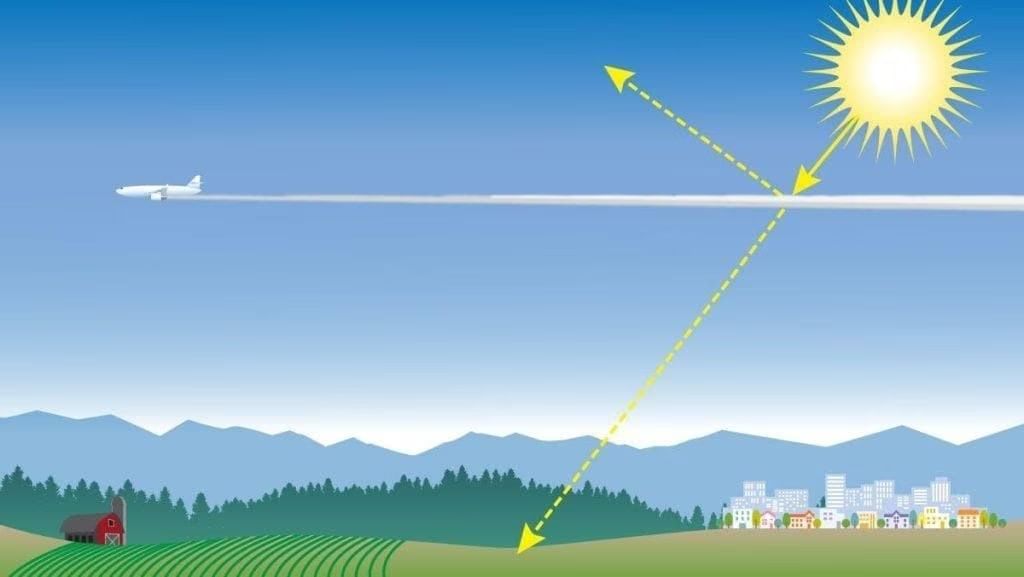
Why in News?
A recent study published in the journal Earth’s Future has proposed an innovative approach to Stratospheric Aerosol Injection (SAI) that could potentially lower its costs and advance its implementation, despite existing opposition. SAI is a method aimed at cooling the planet and mitigating the effects of climate change by dispersing tiny reflective particles into the upper atmosphere.
Key Takeaways
- SAI mimics the natural cooling effects of volcanic eruptions by injecting sulfur dioxide (SO2) into the stratosphere.
- Aerosol particles reflect sunlight, thereby reducing global temperatures.
- Aerosols can be either natural or artificial, affecting air quality and climate.
Additional Details
- Aerosols: These are tiny solid or liquid particles suspended in air or gas. They can originate from natural sources, like volcanic eruptions, or from human activities, such as smoke from burning fossil fuels.
- Aerosol particles can be classified into primary aerosols, which are emitted directly into the atmosphere, and secondary aerosols, which form from precursor gases.
- True aerosol particles have diameters ranging from a few milli micrometres to about 1 micrometre. Particles smaller than 0.1 micrometre are known as Aitken nuclei.
- Visible forms of aerosol plumes include smoke, smog, haze, and dust.
Understanding the dynamics of stratospheric aerosol injection is crucial as it presents a potential method for counteracting climate change effects. However, the implementation of such techniques must be carefully considered in light of environmental and ethical implications.
Internet of Things (IoT)

Why in News?
The Internet of Things (IoT) has emerged as a transformative force, integrating intelligence into daily objects, thereby significantly influencing our lives. From smart refrigerators that track food freshness to security systems offering real-time alerts, IoT is enhancing the intuitiveness, efficiency, and security of our homes.
Key Takeaways
- The IoT is a network of physical devices featuring sensors and software that collect and exchange data.
- Key applications span across various sectors, including smart cities, homes, healthcare, and agriculture.
Additional Details
- Connectivity: IoT devices communicate over networks such as Wi-Fi, Bluetooth, and 5G, utilizing both wired and wireless connections.
- Automation & Intelligence: Devices autonomously make decisions, exemplified by self-driving cars responding to traffic conditions.
- Remote Monitoring: Users can access and manage devices remotely, such as viewing home security feeds via smartphones.
- Interoperability: Devices work in harmony using standardized protocols and compatible software, facilitated by open APIs.
- Data Analytics & AI Integration: Raw data is transformed into actionable insights, enhancing operations in smart cities.
In conclusion, the Internet of Things is revolutionizing various aspects of daily life and industry through enhanced connectivity and automation. However, it also faces significant challenges, particularly in terms of security and standardization, which must be addressed to fully realize its potential.
Neurodegenerative Diseases
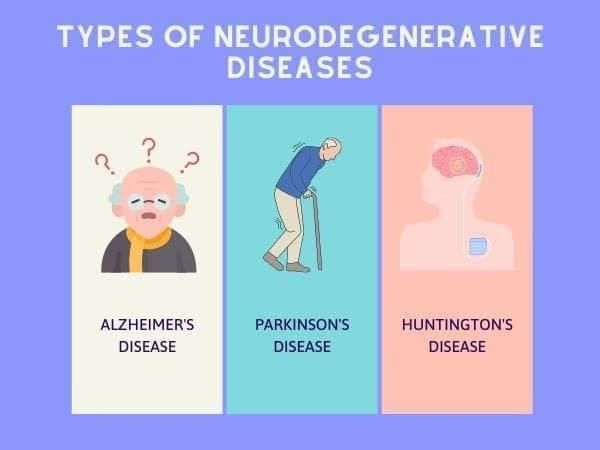
Why in News?
Recent studies conducted by the National Centre for Biological Sciences (NCBS-TIFR) and other research institutions have highlighted that neurodegenerative diseases may begin long before visible symptoms manifest. This process is driven by dysfunction in blood vessels and abnormal protein activity within the brain. This new perspective shifts the focus from direct neuronal damage to early vascular and molecular changes, facilitating earlier diagnosis and potential prevention strategies.
Key Takeaways
- Neurodegenerative diseases can start long before symptoms appear.
- Early vascular and molecular changes are critical in understanding these diseases.
What are Neurodegenerative Diseases?
- Definition: A collection of disorders characterized by the gradual breakdown or death of brain and nerve cells (neurons) over time.
- Consequences include issues with memory, movement, speech, and other essential body functions.
- Progression is typically gradual, and while there is no complete cure, treatments can alleviate symptoms.
Common Examples
- Alzheimer's Disease: Primarily affects memory and cognitive functions.
- Parkinson’s Disease: Influences movement and balance.
- Amyotrophic Lateral Sclerosis (ALS): Affects motor neurons in the brain and spinal cord, controlling voluntary muscles.
- Huntington’s Disease: Causes decay of nerve cells in the brain over time.
- Guillain-Barre Syndrome: A serious autoimmune disorder affecting the peripheral nervous system.
What does Recent Research Reveal about Early Causes of Neurodegenerative Diseases?
- Vascular Dysfunction and Blood-Brain Barrier (BBB) Breakdown:
The BBB is a protective layer formed by tightly connected cells lining brain blood vessels that regulates what enters the brain. Damage to this barrier, due to dysfunction of the protein TDP-43, leads to leakage that allows harmful substances to enter, resulting in inflammation and neuron loss. Studies in mice indicate these vascular changes occur early, before symptoms arise, suggesting blood vessel damage is a crucial early factor in neurodegeneration.
- Intracellular Membrane Signaling Failure (Esyt Protein Dysfunction):
Neurons rely on membrane contact sites between the plasma membrane and endoplasmic reticulum to transfer essential molecules like lipids and calcium, vital for cell signaling and survival. The Esyt protein plays a key role in this process by binding calcium. Impairment of Esyt function disrupts this signaling, endangering neuron health and possibly initiating degeneration.
What are the Key Factors Contributing to Neurodegenerative Diseases?
- Genetic Factors: Mutations in specific genes can disrupt normal neuronal function and repair, increasing vulnerability to degeneration. These mutations may be inherited or occur spontaneously.
- Protein Abnormalities: Accumulation of misfolded proteins, such as amyloid-beta in Alzheimer's disease and alpha-synuclein in Parkinson's disease, interferes with cell function, leading to neuronal toxicity and progressive damage.
- Oxidative Stress: An excess of free radicals can damage neuronal DNA, proteins, and membranes, with overwhelmed antioxidant defenses accelerating neuronal cell death.
- Mitochondrial Dysfunction: Impaired mitochondria fail to produce sufficient energy and release harmful byproducts, compromising neuron survival and promoting degeneration.
- Chronic Inflammation: Ongoing inflammation in the brain activates immune cells that can harm neurons, worsening disease progression.
- Environmental Factors: Exposure to toxins such as pesticides, heavy metals, or infections can induce cellular stress and damage, increasing the risk of neurodegeneration.
- Ageing: The natural ageing process weakens cellular repair and waste clearance mechanisms, making neurons more susceptible to damage and loss over time.
This new understanding of neurodegenerative diseases emphasizes the importance of recognizing early signs and risk factors, which can lead to more effective early interventions and better management of these debilitating conditions.
Voyager Tardigrades Experiment
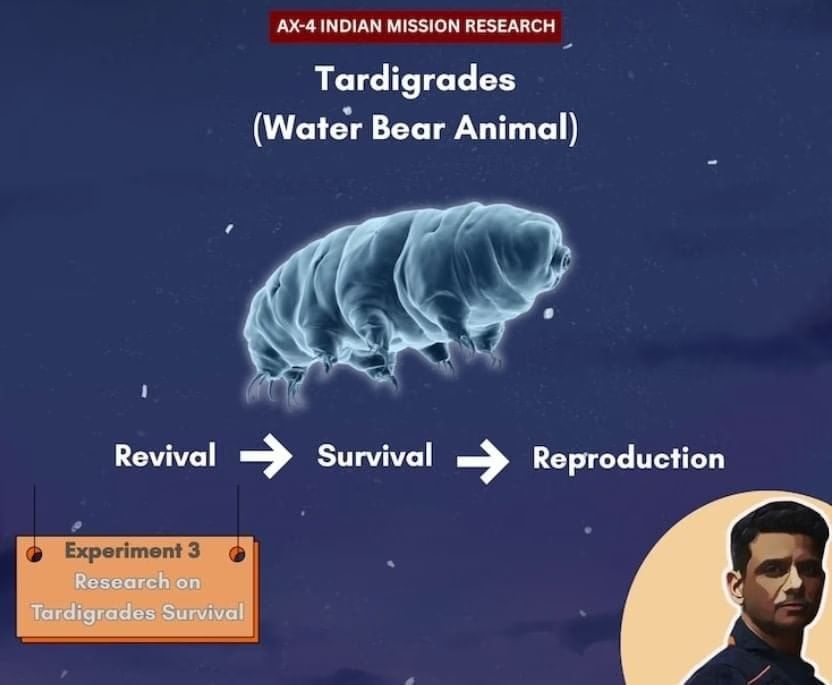
Why in the News?
Indian astronaut Shubhanshu Shukla, during his upcoming two-week mission on the International Space Station (ISS) under the Axiom-4 Mission, will conduct the Voyager Tardigrades experiment.
What are Tardigrades?
- Tardigrades, also known as "water bears" or "moss piglets," are tiny aquatic creatures that have been around for about 600 million years.
- They measure approximately 0.5 mm in length and have four pairs of clawed legs, along with a specialized mouth adapted for sucking nutrients from plant cells and small invertebrates.
- These microscopic animals inhabit a wide range of environments, including mosses, lichens, mountaintops, the depths of the ocean, and even extreme places like Antarctica.
- Tardigrades are renowned for their remarkable resilience. They have survived all five major mass extinction events in Earth's history and are capable of enduring conditions that would be lethal to most other forms of life.
About the Voyager Tardigrades Experiment:
- Overview: The experiment will be carried out by Indian astronaut Shubhanshu Shukla during his mission on the International Space Station (ISS).
- Experimental Process: Tardigrades will be transported in their dormant "tun" state, then revived and observed under microgravity conditions.
- Research Focus: The experiment aims to investigate how space radiation and microgravity impact tardigrade survival, reproduction, and DNA repair mechanisms.
- Scientific Objective: Researchers seek to identify the genes responsible for tardigrades' resilience in space and apply this knowledge to enhance astronaut protection and preserve biological materials during long-term space missions.
Significance of Tardigrades in Space Research:
- Extreme Survivors: Tardigrades are among the most resilient organisms on Earth, capable of surviving extreme temperatures, intense radiation, deep-sea pressure, and even the vacuum of space.
- Dormancy Mechanisms: Their survival strategy involves cryptobiosis and anhydrobiosis, where their metabolism nearly ceases, and their water content is drastically reduced.
- Protective Proteins: Tardigrades produce unique proteins like CAHS, which form a protective gel-like matrix around their cells, shielding them from damage in extreme environments.
- Biomedical Applications: Studying tardigrade proteins may lead to the development of radiation shields for astronauts, preservation methods for human tissues and organs, and advancements in cryopreservation techniques.
- Agricultural and Material Use: Insights gained from tardigrades could also contribute to engineering drought-resistant crops and designing new biomaterials for use on Earth and in space.
|
164 videos|798 docs|1153 tests
|
FAQs on Science & Technology: June 2025 Current Affairs - General Test Preparation for CUET UG - CUET Commerce
| 1. What is Core-Mantle Connectivity and why is it important in geosciences? |  |
| 2. How does Stratospheric Aerosol Injection work as a geoengineering technique? |  |
| 3. What role does the Internet of Things (IoT) play in modern technology? |  |
| 4. What are Neurodegenerative Diseases and what are some common examples? |  |
| 5. What was the Voyager Tardigrades Experiment and what did it aim to discover? |  |















